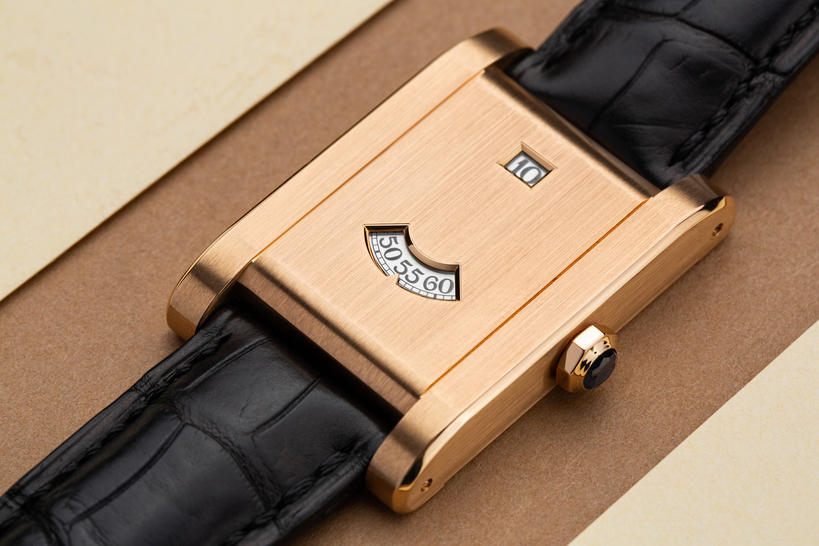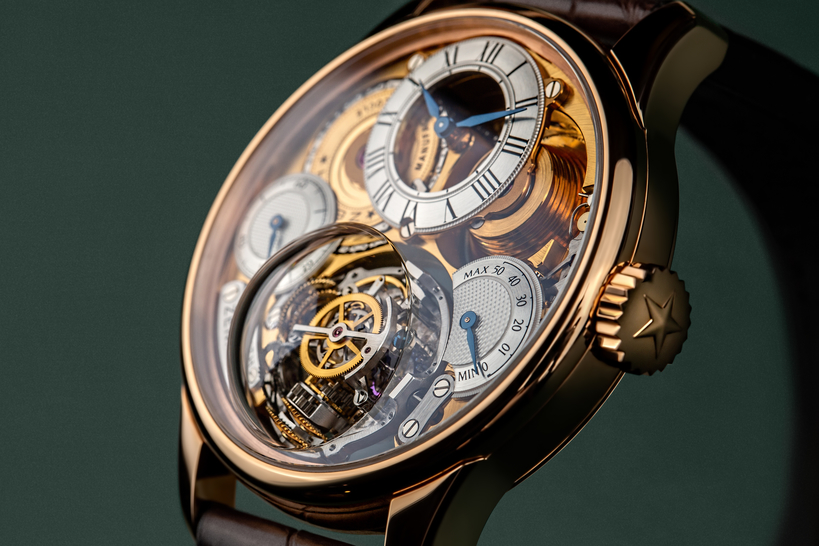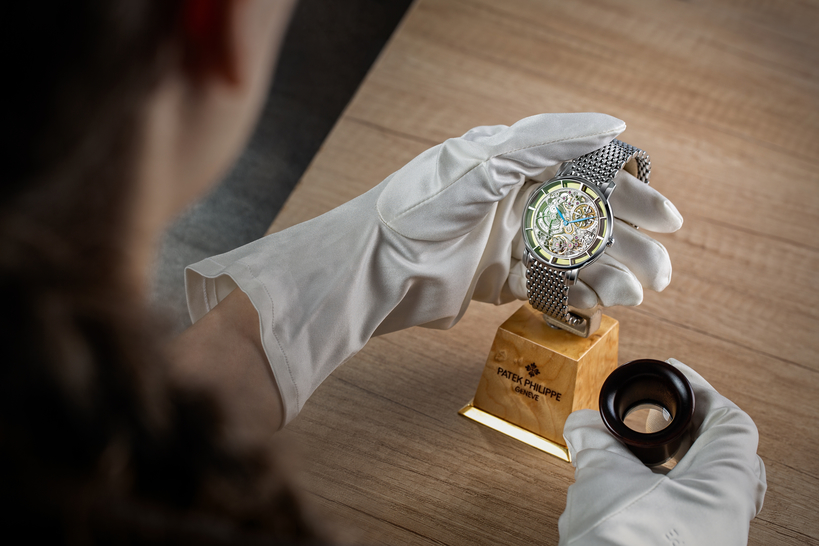A bit more about the revolutionary technologies, slightly changing traditional watchmaking right now.
Mechatronics
In 2005, the Japanese Seiko Holdings Corporation unveiled the first automatic Seiko Spring Drive model using technology to create an unrivaled hybrid of mechanical and electronic watches. The standard Seiko “Magic Lever” bi-directional automatic winding system was incorporated, while the traditional mainspring and balance wheel used in mechanical watches with lever escapements were replaced by the so-called glide wheel.
Instead of oscillating, it rotates at a speed of 8 rotations per second, while the Tri-synchro regulator regulates the accuracy and the number of rotations, which is able to speed up or slow down the speed at which the glide wheel rotates. Even in a zero-gravity environment where both traditional watches and quartz watches tend to behave very strangely with substantial gains and losses in terms of accuracy, the Spring Drive Spacewalk model has proven itself by setting the best example.
Magnetic Balance Wheels
In 2011, Breguet managed to win over the watchmaker’s most fearsome enemy — the magnetic field — which now works to the watchmaker’s advantage. The Breguet Classique Chronométrie 7727 model has a balance wheel with extremely powerful micro-magnets set behind the thinnest of sapphire end stones on the balance staff known as the magnetic pivot, and creates a magnetic field of 1.3 teslas.
The magnets ensure the balance staff is held in an almost perfect position, while also reducing the force of friction to a minimum to eliminate positional timekeeping errors, and also performs the role of a shock absorber to protect the shaft. All of the parts in the lever escapement itself have of course been made from silicon.
In 2013, TAG Heuer introduced the Carrera MikroPendulumS chronograph with the first mechanical escapement without a hairspring in the history of watchmaking. It was replaced by magnets, a magnetic oscillator that turns the balance staff into a perfectly natural rotor. Magnets that are sensitive to temperature changes are no longer the watchmaker's Achilles heal.
They've managed to create a magnet from an alloy with higher temperature ratings made of samarium, cobalt and gadolinium. Moreover, according to TAG Heuer VP of Science and Engineering Guy Semon who came up with the MikroPendulumS concept, mathematical calculations have shown that a stable balance system can be created that beats at a frequency of 500 Hz, which cannot be achieved by a conventional hairspring.
As for the Christophe Claret X-Treme-1 realesed in 2012, it seems to be more a georgeous acessory than serious instrument with its theoretical system driven by magnetic fields to display the hours and minutes, and also a tourbillon. Overall, there is much in store for the future of magnets in watchmaking. A hairspring entails adjustment, balancing and other wizardry, Semon points out, but magnets are just maths and pure physics.
Plateless Movements
In 2006, Richard Mille who was still a little-known master at the time unveiled the interesting RM 012 model, with a movement that essentially had no main plate. It was replaced by a complex tubular structure. The tubes were created from an alloy used in the aerospace industry and scaffolding to build skyscrapers. The idea and the wonderful way in which it was brought to life earned recognition from the jury of the Grand Prix d’Horlogerie de Genève (GPHG) in 2007.
Considering the extent to which people are generally fascinated with skeleton watches, one would think that the success of this design was bound to be followed by mass copies. Yet no one ever produced successful copies — it would be too expensive and complicated to even calculate this design, let alone reproduce it. But when industrial technology progresses to the next stage, this tubular structure is sure to become very popular among the best watch designers.
Multi-Axis Tourbillons
Stephen Forsey and Robert Greubel who created one of the first bi-axial tourbillons — the Greubel Forsey Double Tourbillon — have said that they created it to defend the use of this module and prove that the tourbillon is still able to tangibly increase the accuracy of a mechanical watch. This year, watchmakers at Jaeger-LeCoultre presented their own bi-axial gyrotourbillon with a perpetual calendar.
The point of attaching new axes onto the tourbillon carriage is essentially to help the most beautiful of complications reduce the effect gravity has on the accuracy of a watch movement, not only when the watch is lying in a horizontal position, but also when it is in a vertical position. That’s not to say that a wristwatch is constantly somersaulting in space with the owner's wrist, and the extra axes have helped a lot.
But the vast majority of elite watch manufacturers were happy to support this admirable initiative. Of course they were! After all, a second axis allowed them to at least double the already high price for watches with an ordinary single-axis tourbillon. Tri-axial tourbillons and tourbillons with four axes soon appeared, and then Jaeger-LeCoultre finally set an impressive record for its Duomètre Sphérotourbillon model, which has a carriage axis that rotates 360 degrees like an anti-aircraft gun.
A couple of years later, the same manufacturer beat its own record, when Jaeger-LeCoultre unveiled the Master Grande Tradition Gyrotourbillon 3 to the general public, which is now not only able to rotate 360 degrees horizontally, but can also rotate 360 degrees vertically. In other words, you can calculate its equivalent number of axes by squaring 360, which equals 129,600.













